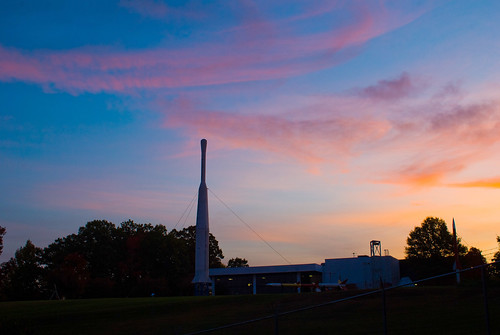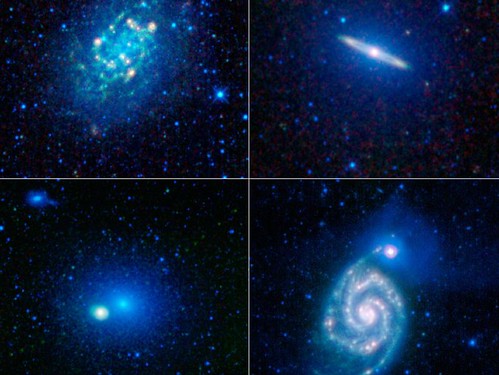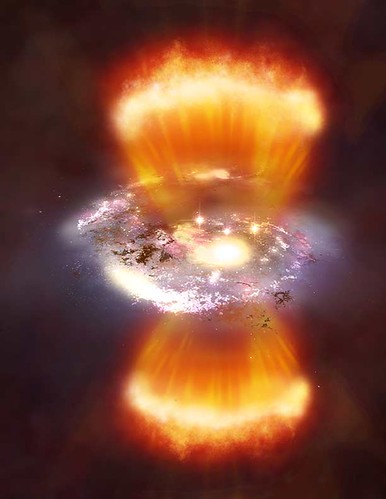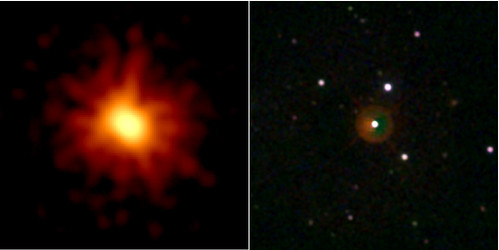Awesomeness Round-up – 12/20/10
- By Maggie Masetti
- December 20, 2010
- Comments Off on Awesomeness Round-up – 12/20/10
It’s been very cold and windy here in Maryland lately – but not quite THIS cold. I guess the upside to extreme temperatures is that you can do experiments like this one, done at Mount Washington Observatory when it was nearly -35 degrees F. Do you know what happens when you throw boiling water in the air when it’s that cold? Watch the video to find out!
More and more of the Week in the Life photos are being released. We liked this set of photos of various buildings at Goddard. As you may recall, we may or may not have disappeared never to be seen again when we filmed a video blog on the history of Building 2. We also blogged about Building 1 and our cleanroom complex.
Here’s the Goddard Visitors Center at sunrise:

Credit: NASA/GSFC/Chuck Hoffman
This gorgeous image of a sphere of gas is the remnant of a supernova explosion!

Credit: NASA, ESA, and the Hubble Heritage Team (STScI/AURA) Acknowledgment: J. Hughes (Rutgers University)
Below is a collage of galaxies from WISE (Wide-Field Infrared Survey Explorer) that was put together for the first anniversary of its launch (December 14). The image shows the different “flavors” that galaxies come in including star-studded spirals, bulging ellipticals, and those with companion galaxies. There is a NASA release with more information on this story.

Image credit: NASA/JPL-Caltech/UCLA
New data from the European Space Agency’s infrared-sensitive Herschel Space Observatory has caught a glimpse of star formation occurring in young galaxies as early as 3 billion years after the Big Bang. Read more on this story at Space.com.

An artist’s rendition of a burst of star formation recently spotted in the early universe by the Herschel Space Telescope Credit: NASA/CXC/M.Weiss.
We’ve posted many times before about citizen science – well, here’s a new opportunity! There is a whole “Zooniverse” of ways to get involved with citizen science, the newest of which is called Planet Hunters. With Planet Hunters, you can use public data from NASA’s Kepler mission to find extrasolar planets! Pretty cool!
Speaking of new exoplanets, a fourth planet was discovered orbiting the star HR 8799, which is about 129 light years from Earth and is faintly visible to the naked eye. You can even see an image of this solar system at the link, taken with the Keck II telescope. Here is Another article about this discovery.
Then there was a “hot Jupiter” star named Qatar-1b. This planet was found by a Qatar astronomer who teamed with scientists at the Harvard-Smithsonian Center for Astrophysics (CfA) in Cambridge, Massachusetts. This story of international collaboration in the name of science is pretty great. Qatar-1b orbitsan orange type K star 550 light-years away. There is more information about the newly discovered planet at the link.
We’ve also blogged (and podcasted!) quite a bit about Gamma Ray Bursts (GRBs). There are new results from a team studying “dark gamma-ray bursts. Astronomers used data from the Swift satellite and new observations from GROND, which is an instrument on the ground-based 2.2 meter MPG/ESO telescope at La Silla in Chile. GROND is very useful for study the afterglow from GRBs. It can be alerted about a GRB by Swift (with minutes!) and can simultaneously observe the GRB through seven filters which cover both the visible and the near-infrared. This information from both GROND and Swift about what wavelenths of light are present GRB afterglows can be used to measure the amount of obscuring dust between Earth and the GRB.
They found that a “significant proportion of bursts are dimmed to about 60–80 percent of their original intensity by obscuring dust.” and that “this effect is exaggerated for the very distant bursts, letting the observer see only 30–50 percent of the light.” What does this mean? It means that they have “conclusively solved the puzzle of the missing optical afterglows. Dark gamma-ray bursts are simply those that have had their visible light completely stripped away before it reaches us.” Read more at the source article, which also has a nice history of the study of GRBs. Here is an article in Astronomy Magazine about this discovery too.
Here’s a related (but unassociated to this particular story) image of a GRB afterglow.
 By far the brightest gamma-ray burst afterglow ever seen is evidenced by the extremely luminous afterglow imaged by Swift’s X-ray Telescope (left) and Optical/Ultraviolet Telescope (right). Credit: NASA/Swift/Stefan Immler, et al.
By far the brightest gamma-ray burst afterglow ever seen is evidenced by the extremely luminous afterglow imaged by Swift’s X-ray Telescope (left) and Optical/Ultraviolet Telescope (right). Credit: NASA/Swift/Stefan Immler, et al.Lastly, don’t forget to check out tonight’s lunar eclipse. It’ll be a total one if you’re North America.


